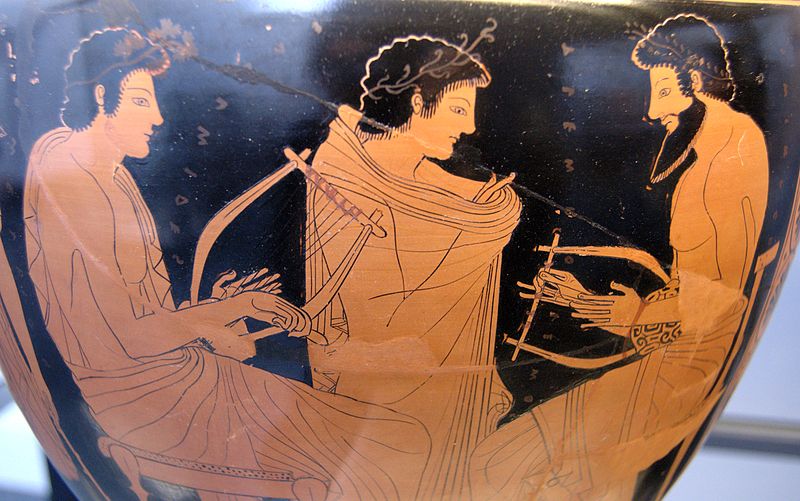by Jack Sharkey for KEF
Louis Armstrong famously said, “all music is folk music, I ain’t never heard no horse sing a song,” which is the perfect way to say that music is a fundamental human experience. Folk music is generally considered to be a genre for the common person, telling stories we can all relate to, but when you think about it, all music truly is folk music – we listen for the emotion and the stories our favorite music tells us in a style we can relate to culturally.

Music has also been described as the “universal language,” but that’s not necessarily true. Rhythm may be universal, but music is the product of the culture from which it comes, and each culture has its own vocabulary, idiom and story-telling rules. In fact, music from other cultures may at first (and possibly permanently) be off-putting if our ears are not open to the idiosyncrasies and nuance of the culture the music is representing. Conversely, if our ears and minds are open to the sounds we are hearing, listening to music that is “foreign” to us can be an extremely exciting and profound experience.
At its essence, music is simply a means of communication. We are lucky to live in a time when music is easily accessible and exists for our entertainment, but that was not always the case. Additionally, the evolution of how music sounds is a result of technological and societal advances from the beginning of mankind. Music is produced for how and why we listen to it, and throughout human history music has also benefited from, and been at the leading edge of, the technology of the day.
The first musical instrument was of course the human body itself – hand clapping and vocal utterances conveyed conditions like danger or available prey and as our needs evolved, so did our methods of making music. There are two instruments that are found to be common amongst almost every ancient and pre-historic human culture – the flute and the drum, with remnants of primitive flutes being found as far back as 37,000 years ago.

Eventually music evolved to become a means of conveying information and most importantly a way to record history. Today we use music for a variety of (mostly personal) reasons, and we tend to listen to music accordingly. Throughout history music was largely a communal experience but we are in a period where we tend to listen solo or in very small social groups. Obviously, festivals and concerts are still communal events, but they are not the primary way we listen to music today. Seventy years ago, we consumed most of our music via live performances and a very small percentage through recorded means, but as a result of technology that has totally reversed.
Today, we tend to listen to music on smaller home systems while we are often engaged in other activities. So it stands to reason that heavily produced and intricate music can become annoying distractions – we are after the rhythm and the melody. That’s why contemporary popular music tends to be missing complicated chord structures played by mid-range instruments like guitars and keyboards. Because of the way we give our attention to music, we want music that is bass-heavy with an emphasis on the vocals and tension inducing instrumentation like strings and keyboard-pads. Of course, there is still a lot of music being made with all sorts of different instrumentation, but for the sake of argument we’re focusing on popular music. Popular music can best be defined as music meant for the greatest level of consumption through the most ubiquitous means possible.

In the 1980s and 90s, music was largely consumed as an accompaniment to a visual medium. The 1980s were also a time of tremendous technological development in music, especially in the digital realm. Snare drums were bigger, melodies were brasher, and productions were bold and complicated. Recordings were bright and spread out wide across the soundstage to ensure the songs played well over televisions and car radios. Arenas and football stadiums were where we went to concerts, so everything had to be as big as possible to reach people a quarter mile from the stage.
The 1970s were probably the last decade of communal listening to recorded music, which truly only became a thing in the 1950s anyway. Home stereos were reaching levels of quality never seen before, and without video games and the thousands of other entertainment options available today, music was the thing that bonded the contemporary generations together. Live music was generally consumed in theaters and halls – and you can’t dismiss the influence of the substances being consumed by the audience – so music leaned toward the complicated and ethereal. Punk was meant to be heard in small pubs and nightclubs, so it was simple and loud, while disco was (obviously) meant to be felt more than heard in discos and dancehalls so bass and repetitive rhythms were the order of the genre. A generation before, jazz was played before small, discerning audiences in coffee houses and nightclubs, so simple quartets with acoustic instruments provided the intimate experience audiences expected.
Folk music and rhythm and blues joined together in the early 1960s to become the singular voice of the decade – and a glue that held one age group together while it actively repulsed another. Thanks to radio and the transistor, recorded music became portable for the first time in history, but sound quality was limited so the ‘hook’ became the most important feature of a song. Could the melody cut through the noise and low-fidelity playback to become a memorable earworm? As the decade ended, multi-track recording allowed artists to put the totality of the music in their head onto tape, so the soundstage became a new device for conveying a song.
An interesting thing happened in the 1950s: Generations stopped attending musical events together – and they stopped dancing together which had historically been a way across all cultures for one generation to introduce the next generation to adulthood. The split between generations started here, and the way generations consumed music was a driving force. Adults in the 50s grew up on communal live performances, whereas kids in the 50s were growing up on recorded music that was suddenly widely available to the mass-market – and intended solely for their consumption. Thousands of years of musical paradigm shifted almost instantaneously as a result of the available technology.

In the 1930s and 40s, concerts and dancehalls gained in popularity forcing musicians to play louder in order to be heard. Without the amplification technologies we have today, the way to solve that problem was through the sheer size of the musical performance. Horn sections carried the melody while the “rhythm section” evolved to drive the beat. The guitar was not a factor in popular music until amplification technology allowed the instrument to move to the front of the band.
At the start of the 20th Century, blues and Country music was written for an immediate audience – typically a gathering on a front porch or church social – and stringed instruments were loud enough to convey the song to the gathered audience. The subject matter was an extension of the storytelling and history-keeping that had always been music’s primary function. A sharecropper in Mississippi had a story to tell that was his and his alone, yet it was the exact same story a listener in a factory town in Massachusetts was likely going through – this was, and always has been, the connection we have to music and musicians.
From the Renaissance to the 18th Century music began to grow from simple storytelling for a small audience to an artform for the people who had the money to subsidize the art and artist. Chamber and Baroque music, consisting of small stringed ensembles (typically a quartet in European styles) was written for small audiences in rooms and halls in estates and the like. By the 19th Century, this style evolved into symphonic music, played by large orchestras in large halls for larger crowds of people who were now able to attend concerts. Opera and theater styles such as kabuki were meant for audiences of up to a few hundred patrons and was performed in theaters designed specifically to transmit the onstage voice and music to the entire audience.
During this time, particularly in the West, church music began to take advantage of the massive cathedrals being built and the technology of the pipe organ, using the reverberation times of the spaces they were intended for. Melodies were simple and repetitive allowing the physical space to enhance the meditative experience of the music. A similar effect is obtained by the Islamic adhan recited from a mosque’s minaret by the mu’azzin – a musical call to the spiritual that goes directly to the very soul of the listener.
During the 20th Century, the nightclub, bar or pub played a major role in the development of jazz, rock & roll, country and blues. While hip-hop descended from larger Jamaican dancehalls to the streets of the Bronx, eventually embracing automobile culture as a music often served best while on the go.

Throughout our history, we have had one companion that has been with us every step of the way. Sometimes using technology to lead us, and other times taking advantage of new technology to further enhance our experience with it. Music is universal and highly personal.
Music is imprinted in our souls and cultures because of the messages it conveys – happiness, sadness, loss, regret, hope for the future, and a simple telling of stories we can relate to as our own. It’s interesting to look at any genre or cultural music and see that it is written, produced and performed for the way the intended audience listens to it.
Truly, all music is folk music, and all music is written and produced for how we experience it.



